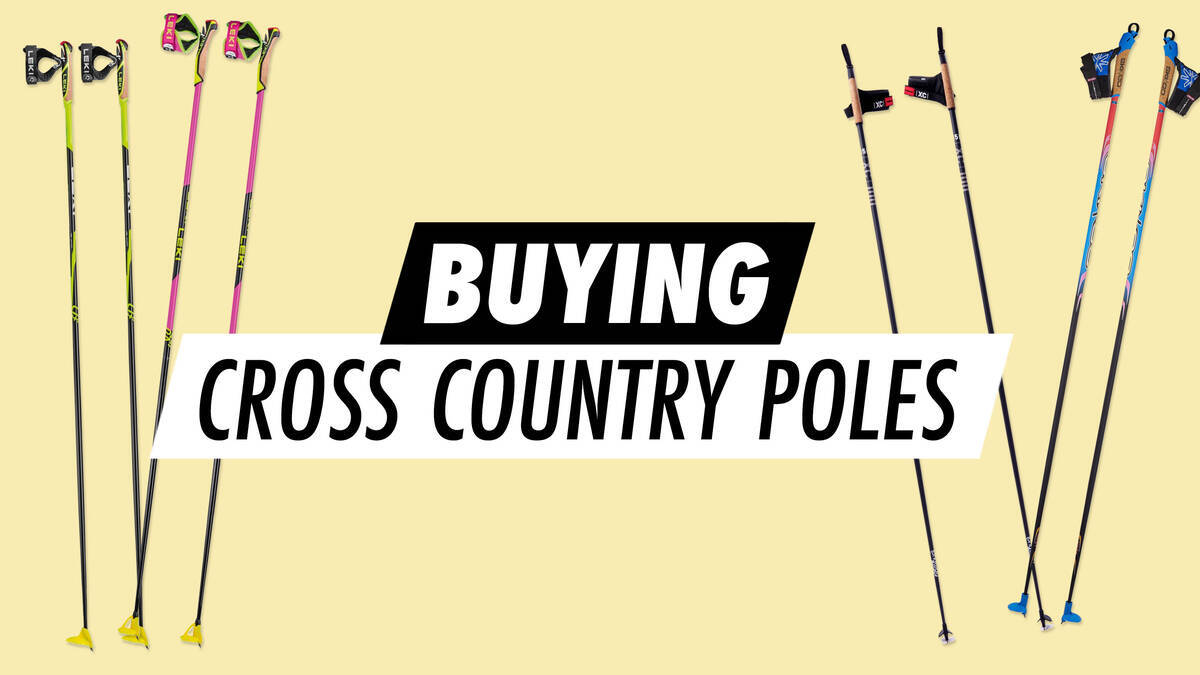Guide to Choosing the Right Cross Country Ski poles

Cross-country ski poles are crucial to the sport of cross-country skiing. Different poling techniques are used in classic cross country and skate skiing, so it's important to remember this when selecting your poles. In this guidance, we'll examine pole length, materials, grips, tips, and more in detail.
If you already know about XC poles, you are welcome to explore our complete selection of cross country ski poles. Otherwise, keep reading to get acquainted with the key factors to consider when choosing cross country ski poles.
Overview
Overview
Cross Country Pole Length: Determining the Ideal Size
When selecting cross country poles, ensuring they match your height and skiing technique is crucial. Proper cross country ski pole length aligns with your height, factoring in your specific skiing style.
Correct sizing of Nordic ski poles is vital as it influences power transfer, comfort, and endurance. Poles that are overly long may strain shoulders and arms, whereas shorter poles might lead to excessive forward bending, reducing power transfer and stability.
Skate ski poles and classic ski poles have different recommended lengths due to varying poling methods. Classic poles are shorter than their skate skiing counterparts for logical reasons.
The classic double poling technique involves the skier lifting the poles to plant them firmly in front. The upper body leans forward to propel, applying force to the poles. If poles are too long, it adds extra strain and makes applying force difficult. Conversely, if they are too short, applying necessary force becomes challenging.
Skate ski poles resemble classic poles, but they are longer to reach the ground from the typical V-shape hold. This additional length allows skiers to extend their range, boosting the force application and momentum generation.
|
|
|
|---|---|
|
Skiing style |
General reference |
|
Classic ski pole length |
30 cm (or 12”) shorter than skiers’ height |
|
Skate ski pole length |
20 cm (or 8”) shorter than skiers’ height. |
Note: In competitive cross country skiing, sticking to specific rules is crucial. The FIS (International Ski and Snowboard Federation) mandates that pole length should not surpass 83% of your height, measured while in cross country boots.
If you cannot find poles that exactly match your height, do not worry. Newcomers to skiing might find shorter poles beneficial, whereas more experienced skiers often decide if sizing up is advantageous through experimentation.
For backcountry skiing, adjustable poles with larger snow baskets are critical. We will delve into this more in the backcountry ski poles section.
Shaft Materials of Cross Country Poles – Stiffness and Weight
The shafts of cross-country ski poles are made from fiberglass, carbon fibre, or a blend of the two. The carbon content determines the shaft's rigidity. Poles made entirely of carbon fibre are more rigid than those made of half carbon and half fiberglass. Aluminium versions exist too, typically for backcountry skiing, because they endure the rigours of long wilderness trips better.
Stiffer poles offer improved power transfer, translating your exertions into maximum speed on trails. A less rigid pole results in reduced power transfer but is easier on arms over lengthy distances. If you suffer from elbow strain, softer poles could be beneficial. For roller skiing on hard surfaces, a softer pole is ideal—explore our roller ski poles collection.
The pole's stiffness also affects its weight: the stiffer, the lighter. Lighter poles require less effort to move forward with each stroke.
In essence: if you aim for speed, choose stiff and light poles. For a laid-back skiing experience where enjoying nature trumps speed, softer poles suffice.
Material of Grips and Strap Designs for Cross Country Poles
Grips significantly impact the performance and comfort of cross country ski poles, affecting control and stability while skiing. Common materials for grips include rubber, cork, and foam, each offering specific benefits.
Rubber grips offer a non-slip, firm grasp suitable for varied weather conditions. Cork grips retain heat better, keeping hands warmer. Foam grips provide light, cushioned support, reducing hand fatigue during extended trips and ensuring comfort.
The importance of pole straps is undeniable; they guarantee pole control. Adjusting strap length properly is vital for optimal performance. It should allow you to release your grip on the handle while maintaining control during strides.
By choosing grips to match your preferences and adjusting straps correctly, you enhance both your skiing experience and performance.
If you're in need of spare grips or straps, explore our cross country ski poles accessories to find replacements.
The following video provides simple instructions to change ski pole grips.
Backcountry Cross Country Ski poles - Adjustable Poles with Larger Snow Baskets
Opt for cross-country ski poles with large baskets when heading into backcountry terrain. Larger baskets provide ample support in the soft snow outside groomed trails, ensuring stability in changing conditions.
Adjustable poles are vital for backcountry skiing. They allow for independent pole length adjustments when covering mountainous terrain. With adjustable poles, you can maintain level arms while traversing steep areas, referred to as side-hilling.
As backcountry conditions can rapidly change, being able to modify pole length is beneficial: shorter for climbing efficiently and upright, longer for better stability on flat or descending sections.
Discover adjustable ski poles in our selection of cross country ski poles. Use the filter at the top to choose ranges (like xx cm - xx cm) to view all models of adjustable poles.
Replacing Tips on Cross Country and Roller Ski poles
Over time, pole tips wear and will need replacing. Consider switching cross country tips for harder roller ski pole tips suitable for asphalt if you intend to use the same poles for roller skiing.
The video below offers straightforward guidance on replacing tips for both cross country and roller ski poles. Measure your pole's diameter before purchasing tips for ski poles or roller skiing.
